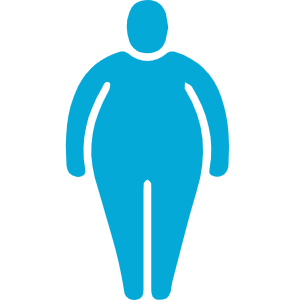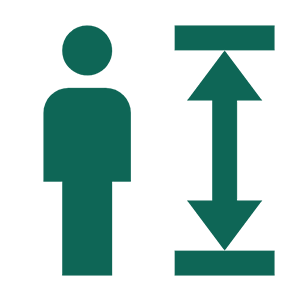TDEE vs BMR: 4 Key Differences Explained in 3 Minutes!
TDEE and BMR are two essential metrics on your fitness and weight loss journey. But what exactly sets them apart? Simply put, BMR is your "minimum calorie requirement," while TDEE is your daily "total energy budget." One is a static measure of basic metabolic rate, and the other is a dynamic calculation of overall energy expenditure. Together, they determine how much you should eat and move.
Curious about how to use these metrics to plan your weight loss, muscle gain, or weight maintenance goals? Don't worry! The following content will help you understand their definitions, differences, and practical applications, making your health goals more attainable and straightforward.
The Definitions of TDEE and BMR Are Different
On your fitness or weight-loss journey, you might have heard of TDEE and BMR. These terms may sound a bit abstract, but they’re actually easy to grasp once you relate them to real-life examples.
What is BMR?
BMR (Basal Metabolic Rate) is like your body's "life support mode."
It represents the minimum amount of energy your body needs to sustain essential functions like heartbeat, breathing, and blood circulation, even if you were completely at rest (e.g., lying in bed all day doing nothing).
- In simple terms: BMR is your body’s "standby power."
- For example: Even if you don’t move a muscle all day, your body still requires this energy to keep running.
What is TDEE?
TDEE (Total Daily Energy Expenditure) is your body’s "full power mode."
It includes all the energy you burn throughout the day: from brushing your teeth, walking, and exercising, to even digesting food. TDEE is dynamic because it varies depending on your lifestyle and activity level.
- In simple terms: TDEE is your body’s "total daily energy bill."
- For example: If BMR is your "basic living expense," TDEE is your "total daily budget," accounting for all expenditures.
The Scope of Influence of TDEE and BMR Are Different
Did you know? TDEE and BMR differ not only in definition but also in their scope of influence. Simply put, BMR is a "static measure," while TDEE is a "dynamic metric," with completely different applications. Let’s explore their distinctions in real-life scenarios.
BMR’s Scope: Energy for Basic Survival
- Key point: BMR is all about maintaining basic bodily functions, such as heartbeat, breathing, blood flow, and organ activity.
- Usage: BMR is used to assess your minimum energy needs, especially during complete rest. If your daily calorie intake falls below your BMR, your body might enter "power-saving mode," slowing down metabolism and potentially harming your health.
- Analogy: BMR is like your "bare-minimum budget" — just enough to survive, with no extra energy for additional activities.
TDEE’s Scope: Comprehensive Energy Needs
- Key point: TDEE covers all energy expenditure, including physical activities like walking, exercising, and even digesting food.
- Usage: TDEE is ideal for setting calorie goals for weight loss, muscle gain, or maintenance because it adjusts based on your activity levels and lifestyle.
- Analogy: TDEE is like your "daily expense account," covering all expenditures with greater flexibility.
Simple Comparison Example
Imagine you’re an office worker:
- BMR: If you spend the entire day lying on the couch binge-watching TV, your body still needs a certain amount of energy to keep your heart beating and lungs working — that’s your BMR.
- TDEE: If you also go for a jog, cook meals, and commute to work, your energy expenditure increases. TDEE accounts for all these activities.
Key Differences
- Static vs. Dynamic: BMR is static and determined by factors like weight, age, and gender, while TDEE is dynamic and influenced by activity levels and lifestyle.
- Basic vs. Comprehensive: BMR focuses on minimum survival needs, whereas TDEE reflects total daily energy expenditure.
TDEE and BMR Have Different Calculation Methods
Does calculating calories seem daunting? It doesn’t have to be! The calculation methods for TDEE and BMR are straightforward. Their key difference lies in calculation depth: BMR is simpler, while TDEE incorporates additional variables. Let’s break them down in the simplest terms.
BMR: Easy and Direct
BMR is often calculated using the Harris-Benedict Equation, which considers your weight, height, age, and gender. Here’s the formula (don’t worry about memorizing it—just understand the logic):
For men:
BMR = 88.362 + (13.397 × weight in kg) + (4.799 × height in cm) - (5.677 × age)For women:
BMR = 447.593 + (9.247 × weight in kg) + (3.098 × height in cm) - (4.330 × age)
Feeling overwhelmed? No worries—try our handy BMR Calculator! Just input your details to quickly determine your basal metabolic rate.
TDEE: Comprehensive and Detailed
TDEE is calculated by multiplying your BMR by an Activity Factor, which reflects your daily activity level. Here’s the formula:
TDEE Formula:
TDEE = BMR × Activity FactorActivity Factor Reference Table:
- Sedentary (minimal movement): Activity Factor = 1.2
- Lightly Active (occasional exercise): Activity Factor = 1.375
- Moderately Active (30–60 minutes of exercise daily): Activity Factor = 1.55
- Very Active (intense exercise for 1+ hour daily): Activity Factor = 1.725
- Super Active (manual labor or professional athlete): Activity Factor = 1.9
Example:
- If your BMR is 1500 calories and you exercise for 1 hour daily (Activity Factor = 1.55):
TDEE = 1500 × 1.55 = 2325 calories
This is the total energy you need to maintain your weight.
Not sure about your activity level? Use our TDEE Calculator to get an accurate estimate and easily understand your daily energy needs!
The Application Scenarios of TDEE and BMR Are Different
BMR: Evaluate Minimum Calorie Requirements
- Primary use: BMR helps you understand the minimum energy needed to sustain your body’s basic functions.
- Who should use it:
- During recovery or illness: For example, hospitalized patients may need their BMR assessed to ensure sufficient caloric intake.
- When planning a diet: If your calorie intake falls below your BMR, it may lower your metabolism and put your body in "starvation mode."
- Reminder: BMR is not your target calorie intake but simply a baseline figure.
Example:
John, who is trying to lose weight, discovers his BMR is 1400 calories. This means that even if he’s entirely sedentary, he still needs at least 1400 calories to maintain basic functions. Eating less than this may cause fatigue and harm his health.
TDEE: Plan for Overall Energy Needs
- Primary use: TDEE is the most practical metric for real-life energy planning.
- Who should use it:
- For weight loss: Create a calorie deficit (e.g., eat 500 calories less than your TDEE) for sustainable fat loss.
- For muscle gain: Create a calorie surplus (e.g., eat 300 calories more than your TDEE) to support muscle growth.
- For weight maintenance: Balance your calorie intake close to your TDEE to maintain a healthy weight.
- Dynamic adjustments: Your TDEE changes with your activity level—more movement means a higher TDEE.
Example:
Jane’s TDEE is 2000 calories. To lose weight, she sets her daily intake at 1500 calories, maintaining a 500-calorie deficit. This approach keeps her satisfied while enabling steady fat loss, making her plan both effective and sustainable.












 EN
EN









